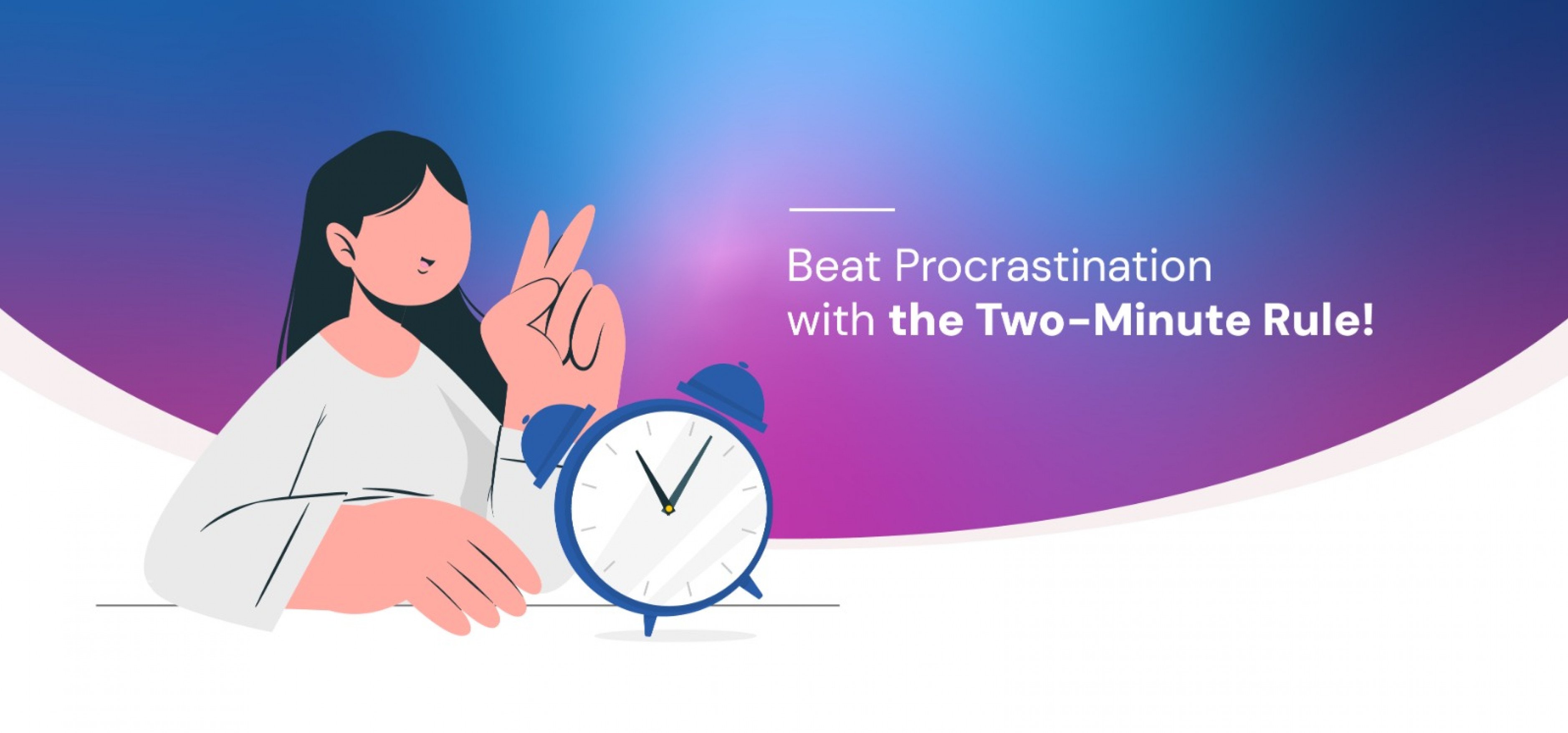Beat Procrastination with the Two-Minute Rule!
Table of Contents
Introduction
Procrastination affects almost everyone, hindering productivity and causing stress. We all have faced days where tasks pile up, deadlines loom, and stress levels rise simply because we keep delaying what needs to be done. Fortunately, the two-minute rule provides a simple yet highly effective method to overcome procrastination by making tasks instantly actionable and manageable.
What is the Two-Minute Rule?
The two-minute rule was popularized by productivity expert David Allen in his acclaimed book "Getting Things Done." The core principle is straightforward: if a task can be done in two minutes or less, do it immediately. This practice helps prevent the buildup of small tasks that can clutter your to-do list and overwhelm your mind.
How the Two-Minute Rule Works
Immediate Execution
The most critical aspect of the two-minute rule is immediate action. Tasks that require minimal effort—such as responding to a brief email, tidying your workspace, or jotting down a quick note—should be tackled without delay. By acting instantly, you prevent small tasks from accumulating and consuming mental space and energy.
Breaking Down Larger Tasks
The two-minute rule isn't limited to small tasks. It can also effectively address larger projects by breaking them down into smaller, manageable actions that can be initiated quickly. For instance, instead of feeling overwhelmed by a task like "write a report," start by simply opening your document and creating a title or outline—tasks that take less than two minutes.
Building Momentum
Initiating tasks—even small ones—creates momentum. Completing these quick actions generates a sense of accomplishment, motivating you to move on to bigger, more complex tasks with increased enthusiasm and less resistance.
Benefits of the Two-Minute Rule
Reduces Procrastination
By fostering a habit of immediate action, the two-minute rule effectively reduces the tendency to postpone tasks. Small, manageable actions are completed swiftly, preventing overwhelming backlogs.
Boosts Productivity
Frequent completion of minor tasks clears mental clutter and allows you to focus more clearly on larger, priority tasks. The immediate execution habit helps maintain productivity throughout the day.
Develops Positive Habits
Regularly applying the two-minute rule reinforces positive behavior patterns. Over time, immediate action becomes second nature, making it easier to start tasks promptly and stay consistent.
Reduces Stress
Addressing minor tasks promptly prevents them from becoming sources of stress and anxiety. A clearer to-do list leads to reduced stress and improved overall mental well-being.
How to Effectively Apply the Two-Minute Rule
Make it a Habit
Consistency is crucial. Apply the two-minute rule regularly until it becomes an automatic habit. Commit consciously at the beginning, and it will gradually integrate naturally into your workflow.
Stay Mindful
Be aware of the tasks that come your way. Immediately assess their duration, and if under two minutes, handle them at once. Maintaining mindfulness helps prevent procrastination.
Remain Flexible
While strictly adhering to the two-minute limit, remain adaptable. Slightly adjust your approach as needed without compromising the core principle of immediate action.
Overcoming Common Challenges
Dealing with Distractions
Create a dedicated workspace free of distractions, such as turning off unnecessary notifications or designating specific times for email and communication checks. This enhances focus and productivity.
Misjudging Task Duration
Initially, you might underestimate or overestimate task durations. Regularly track the time taken to complete tasks to enhance your accuracy in estimating task lengths, improving efficiency over time.
Maintaining Consistency
Set up reminders or visual cues around your workspace to reinforce the habit. Regular reminders help embed the two-minute rule into your daily routine.
Real-Life Applications
Workplace Productivity
Incorporating the two-minute rule at work can drastically improve efficiency. Quickly managing emails, setting short meeting agendas, or immediately updating project notes can significantly streamline your work processes.
Personal Life
The rule also benefits personal life management. Quickly tidying up, paying bills, or scheduling appointments reduces domestic stress and improves overall quality of life.
Academic Settings
Students benefit greatly from the two-minute rule, especially during exam periods. Quickly reviewing notes, organizing study materials, or drafting study plans can enhance academic performance and reduce exam anxiety.
Conclusion
The two-minute rule is a deceptively simple yet powerful strategy for overcoming procrastination, enhancing productivity, and creating a stress-free environment. Whether applied in professional, academic, or personal contexts, immediate action and breaking tasks into smaller, manageable actions can profoundly impact your efficiency and overall well-being. Begin incorporating this habit today, and watch your productivity soar.

